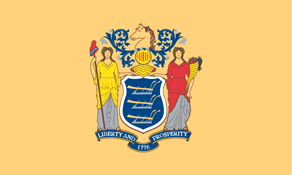New Jersey State Standards for Arts Education: Grade 3

Currently Perma-Bound only has suggested titles for grades K-8 in the Science and Social Studies areas. We are working on expanding this.
NJ.1.1. (Aesthetics) All students will use Aesthetic knowledge in the creation of and in response to Dance, Music, Theater, and Visual Art.
A.1. Knowledge: Compose simple works of art in response to stylized characteristics observed in the dance, music, theater, and visual art of various cultures and time periods.
A.2. Knowledge: Communicate ideas reflecting on the nature and meaning of art and beauty.
A.3. Knowledge: Recognize works of art and art elements designed to imitate systems in nature.
B.1. Skills: Apply basic domain-specific arts language to communicate personal responses to dance, theater, music, and visual art.
B.2. Skills: Compare and contrast works of art that communicate significant cultural meanings.
B.3. Skills: Apply qualitative terms when responding to works of art.
B.4. Skills: Create an arts experience that communicates a significant emotion or feeling.
NJ.1.2. (Creation and Performance) All students will utilize those skills, media, methods, and technologies appropriate to each art form in the creation, performance, and presentation of Dance, Music, Theater, and Visual Art.
A.1. Dance: Perform planned and improvised dance sequences with and without musical accompaniment, demonstrating aspects of time, space/shape, and energy with the intent to communicate meaning.
A.2. Dance: Present planned and improvised dance sequences on a variety of themes using curved and straight pathways and levels in space and discuss their meanings.
A.3. Dance: Demonstrate kinesthetic awareness and basic anatomical principles of concentration and focus in performing dance movement.
A.4. Dance: Utilize arts media and technology in the creation and/or performance of short phrases and compositions.
A.5. Dance: Create and perform the eight locomotor movements of walking, running, hopping, jumping, leaping, galloping, sliding, and skipping in a dance context.
A.6. Dance: Define and maintain personal space.
B.1. Music: Clap, sing on pitch, or play from progressively complex notation while maintaining a steady tempo.
B.2. Music: Recognize and vocalize the tonal triad (do, mi, sol) after being given the 'home tone.'
B.3. Music: Sing or play simple melodies or rhythmic accompaniments in AB and ABA forms independently and in groups, while blending both unison and/or harmonic parts and vocal and/or instrumental timbres, matching dynamic levels and responding to cues of a conductor.
B.4. Music: Modify elements of music within a piece to create different expressive ideas.
C.1. Theater: Demonstrate clarity of intent, character, and logical story sequence through classroom dramatizations.
C.2. Theater: Use movement as a medium for storytelling and as a means of projecting creative decisions regarding character.
C.3. Theater: Assume the roles of theater participants (e.g., director, actor, playwright, designer), and collaborate to enact classroom dramatizations using available materials that suggest scenery, properties, sound, costumes, and makeup.
C.4. Theater: Project an understanding of the intent of dialogue by performing from a script.
D.1. Visual Art: Apply the basic principles of balance, harmony, unity, emphasis, proportion, and rhythm/movement to a work of art.
D.2. Visual Art: Explore the use of paint, clay, charcoal, pastels, colored pencils, markers, and printing inks and select appropriate tools in the production of works of art.
D.3. Visual Art: Generate works of art based on selected themes.
D.4. Visual Art: Investigate careers in the world of visual arts.
NJ.1.3. (Elements and Principles) All students will demonstrate an understanding of the elements and principles of Dance, Music, Theater, and Visual Art.
A.1. Dance: Investigate the relationship of dance and other art forms.
A.2. Dance: Differentiate basic compositional structures in choreography.
A.3. Dance: Recognize contrasting and complementary shapes and shared weight centers in composition and performance.
B.1. Music: Explore musical elements through verbal and written responses to diverse aural prompts and printed scores.
B.2. Music: Identify and categorize sound sources by common traits.
B.3. Music: Differentiate basic structures in music composition.
C.1. Theater: Recognize basic stage directions in the dramatization of stories/plays.
C.2. Theater: Examine the basic structural characteristics of the well-made play.
D.1. Visual Art: Identify the design principles of balance, harmony, unity, emphasis, proportion, and rhythm/movement.
D.2. Visual Art: Identify elements and principles of design in specific works of art.
NJ.1.4. (Critique) All students will develop, apply and reflect upon knowledge of the process of critique.
A.1. Knowledge: Utilize basic arts terminology and arts elements in all four arts domains.
A.2. Knowledge: Recognize the value of critiquing one's own work as well as the work of others.
B.1. Skills: Observe the basic arts elements in performances and exhibitions.
B.2. Skills: Formulate positive analysis of arts performances by peers and respond positively to critique.
B.3. Skills: Recognize the main subject or theme in a work of art.
NJ.1.5. (History/Culture) All students will understand and analyze the role, development, and continuing influence of the arts in relation to world cultures, history, and society.
A.1. Knowledge: Identify works of art from various historical periods and diverse cultures.
A.2. Knowledge: Recognize arts resources that exist in communities.
B.1. Skills: Describe the general characteristics of artworks from various historical periods and world cultures.
B.2. Skills: Examine art as a reflection of societal values and beliefs.